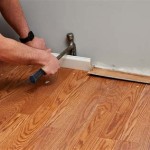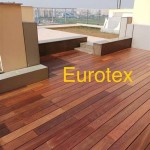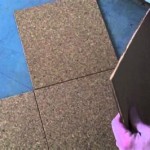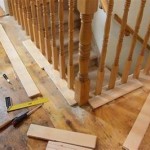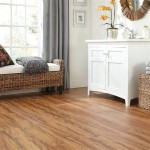Vinyl Wood Plank Flooring: A Practical and Stylish Choice for Kitchens
Vinyl wood plank (VWP) flooring has emerged as a compelling alternative to traditional kitchen flooring options such as hardwood, tile, and laminate. Its combination of aesthetic appeal, durability, water resistance, and ease of maintenance makes it a particularly suitable choice for the demanding environment of a kitchen. This article explores the various aspects of VWP flooring, highlighting its advantages, disadvantages, installation considerations, and maintenance requirements when used specifically in kitchen settings.
The composition of VWP flooring contributes significantly to its performance characteristics. It typically consists of multiple layers, each serving a distinct purpose. The base layer often provides stability and cushioning. Above this lies the core layer, which can be made from different materials, including rigid core (SPC – Stone Plastic Composite) or flexible core (WPC – Wood Plastic Composite). SPC cores are denser and more resistant to indentation, while WPC cores offer greater comfort underfoot. The decorative layer, often a high-resolution printed image simulating the appearance of natural wood, determines the flooring's aesthetic. Finally, a wear layer, typically made of clear vinyl, protects the decorative layer from scratches, scuffs, and stains. The thickness of the wear layer is a critical factor in determining the flooring's durability and suitability for high-traffic areas like kitchens.
Key Advantages of Vinyl Wood Plank Flooring in Kitchens
VWP offers a multitude of benefits that make it a popular choice for kitchen flooring.
Water Resistance: One of the primary advantages of VWP flooring is its superior water resistance. Unlike hardwood, which is highly susceptible to water damage, or laminate, which can swell and warp with prolonged exposure to moisture, VWP is inherently waterproof. This makes it an ideal choice for kitchens, where spills are common and water can easily accumulate from cooking, washing dishes, and general use. The waterproof nature of VWP helps prevent mold and mildew growth, contributing to a healthier indoor environment.
Durability: Kitchens are high-traffic areas that endure significant wear and tear. VWP flooring is designed to withstand the demands of daily use, resisting scratches, dents, and scuffs. The protective wear layer is crucial in maintaining the flooring's appearance over time. Higher wear layer thicknesses offer greater protection and are recommended for kitchens with heavy foot traffic, pets, or children. The durability of VWP translates to a longer lifespan compared to other flooring options, making it a cost-effective investment in the long run. The resilient surface also provides a degree of impact resistance, reducing the likelihood of cracking or chipping from dropped items.
Ease of Maintenance: Maintaining VWP flooring in a kitchen is relatively simple and straightforward. Regular sweeping or vacuuming removes loose dirt and debris. For spills and stains, a damp mop with a mild detergent is typically sufficient. Unlike tile, VWP does not require grout cleaning, which can be a time-consuming and tedious task. The smooth, non-porous surface of VWP also makes it resistant to stains and odors, contributing to a cleaner and more hygienic kitchen environment. Some VWP products even feature enhanced stain resistance coatings, further simplifying maintenance.
In addition to these primary benefits, VWP flooring offers other advantages, such as its relatively easy installation process, especially with click-lock systems. It also provides a degree of comfort underfoot compared to harder surfaces like tile or concrete. Furthermore, VWP is available in a wide variety of styles, colors, and textures, allowing homeowners to achieve a desired aesthetic while also benefiting from its practical advantages.
Potential Drawbacks of Vinyl Wood Plank Flooring in Kitchens
Despite its many advantages, VWP flooring also has some potential drawbacks that should be considered before making a decision.
Susceptibility to Indentation: While VWP is generally durable, it can be susceptible to indentation from heavy furniture or appliances, particularly if the core material is not sufficiently dense. SPC cores offer better indentation resistance compared to WPC cores. Using furniture pads under heavy objects can help prevent indentation. The severity of indentation also depends on the thickness of the flooring and the quality of the subfloor. Uneven subfloors can exacerbate the problem, leading to uneven wear and potential damage to the flooring.
Limited Heat Resistance: VWP flooring is not as heat resistant as some other flooring options, such as tile. Direct exposure to high heat, such as from a hot pan placed directly on the floor, can potentially damage the vinyl. It is advisable to use trivets or mats under hot items to protect the flooring. While the risk is relatively low under normal kitchen conditions, it is a factor to consider in areas where high heat exposure is likely.
Potential for Fading: Prolonged exposure to direct sunlight can cause some VWP flooring to fade over time. This is more likely to occur with lower-quality products or those with less UV protection. Using window coverings, such as blinds or curtains, can help mitigate this issue. Selecting VWP with UV inhibitors can also help to prevent fading. The risk of fading is generally lower in kitchens that do not receive direct sunlight for extended periods.
While these drawbacks are valid concerns, they can often be mitigated with careful product selection, proper installation, and appropriate maintenance practices. Choosing a high-quality VWP product with a suitable core material and wear layer, ensuring a level subfloor, and using furniture pads and window coverings can help to minimize these potential issues.
Installation and Maintenance Considerations for VWP in Kitchens
Proper installation and maintenance are crucial for maximizing the performance and longevity of VWP flooring in a kitchen.
Subfloor Preparation: A level and smooth subfloor is essential for successful VWP installation. Any imperfections in the subfloor can telegraph through the flooring, creating an uneven surface and potentially damaging the planks. The subfloor should be thoroughly cleaned and any cracks or imperfections repaired before installation begins. Self-leveling compounds can be used to create a perfectly smooth surface. In some cases, underlayment may be required to provide additional cushioning or insulation. The type of subfloor material (e.g., concrete, plywood, OSB) will influence the preparation methods required.
Installation Method: VWP flooring is typically installed using either a click-lock system or a glue-down method. Click-lock systems are generally easier to install and are suitable for DIY projects. Glue-down installations require more skill and experience but can provide a more permanent and stable flooring surface. The choice of installation method depends on the specific product, the size and shape of the kitchen, and the homeowner's skill level. Following the manufacturer's instructions carefully is crucial for a successful installation.
Regular Cleaning: Regular cleaning is essential for maintaining the appearance and hygiene of VWP flooring in a kitchen. Sweeping or vacuuming removes loose dirt and debris, preventing scratches and scuffs. Spills should be cleaned up immediately to prevent staining. A damp mop with a mild detergent can be used for general cleaning. Avoid using harsh chemicals or abrasive cleaners, as these can damage the wear layer. Using a microfiber mop is recommended for optimal cleaning efficiency. Regular cleaning not only preserves the flooring's aesthetic appeal but also contributes to a healthier kitchen environment.
Preventative Measures: Taking preventative measures can extend the life of VWP flooring and minimize the risk of damage. Using furniture pads under heavy objects prevents indentation. Placing mats at entrances helps to trap dirt and debris, reducing wear and tear. Avoiding the use of high heels or sharp objects on the flooring can prevent scratches and scuffs. Regularly inspecting the flooring for any signs of damage, such as cracks or loose planks, allows for timely repairs and prevents further deterioration.
By considering these installation and maintenance considerations, homeowners can ensure that their VWP flooring performs optimally and maintains its beauty for years to come. The initial investment in proper preparation and installation, coupled with consistent maintenance practices, will ultimately result in a durable, attractive, and functional kitchen flooring solution.

Hardwood Vs Luxury Vinyl Plank Flooring The Creative Kitchen Co

Updating A Kitchen With Vinyl Engineered Plank Flooring Cutertudor House

Hardwood Vs Luxury Vinyl Plank Flooring The Creative Kitchen Co

Dark Luxury Vinyl Plank Kitchen Farmhouse Decor House Interior Design

8 Reasons You Should Consider Luxury Vinyl Plank Flooring

Vinyl Flooring For Kitchen Best Laminate

What Is Luxury Vinyl Plank Flooring America

Vinyl Flooring For Kitchens

Luxury Vinyl Plank In Kitchen Ferma Flooring

Renature By Coreluxe 5mm W Pad Mount Birch Waterproof Rigid Vinyl Plank Flooring 6 81 In Wide X 51 Long Ll
Related Posts


